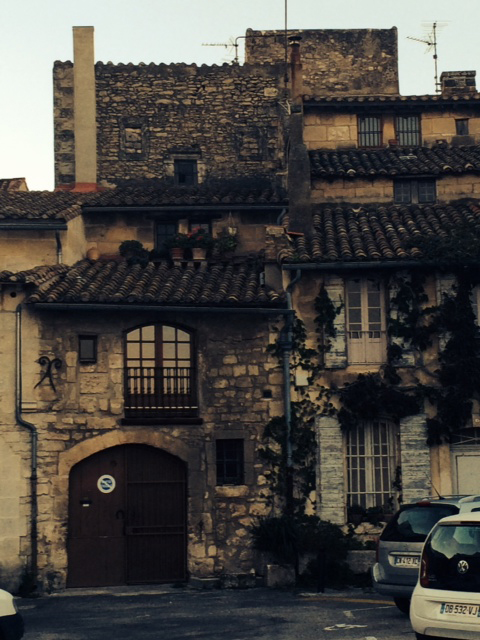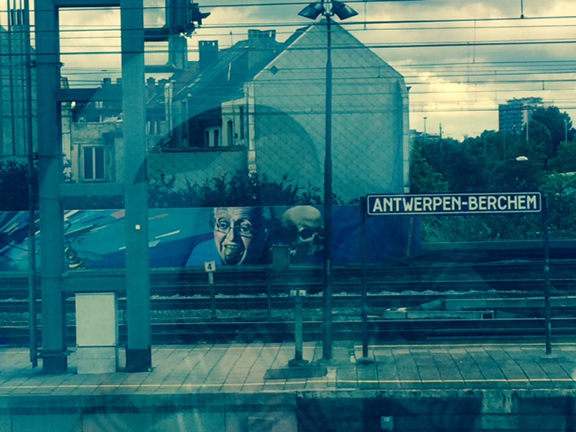We are approaching the end of the tour. While there are plenty more paintings and locations to discuss, here is where the story of his life ends
"Wheat Fields With Crows," by Vincent van Gogh
In popular legend this is Vincent's last painting. It speaks of madness with three roads intersecting in the foreground and, at first glance, none of them appears to lead anywhere. As the guide pointed at the middle road in the painting—which more or less matched the roads we were standing on—she noted ominously that the middle road ended abruptly and led nowhere, Dan The Man Harshberger, who was standing to my right, said, "No, the road clearly dips to the right and leads out of the scene." Leave it to a graphic designer from Kingman to add some levity that I have a hunch even Vincent would have appreciated.
Kirk Douglas, as Vincent, paints his supposed last painting, "Wheat Fields With Crows."
In the movie "Lust For Life," Vincent (Kirk Douglas) is painting this scene when the end comes and a murder of crows (how appropriate in this situation) fly at him from all directions and in desperation he retrieves a pistol from a tree bough and we hear a loud report that signals his suicide. This is the "official" version of Vincent's sad end and has held sway for over 110 years. It also makes good, local business sense because the tour guides (sometimes three groups at once are working the narrow roads of the town up on to the high ground of the wheat fields. As we stood at the intersection of death and murderous crows, another group ahead of us was heading towards the cemetery, not 50 yards to the east, while another group was about to come out the main gates.
A Viking tour group heads towards the cemetery where Vincent and his brother
Theo are buried. They have just left the alleged site of "Wheat Fields With Crows."
Our guide told us the big crowds started showing up in 1995 and that this year they are expecting 500,000 visitors to the gravesite. For comparison, I believe the O.K. Corral gets 200,000 visitors a year and Lincoln, New Mexico, Billy the Kid's hometown, gets 60,000.
Vincent has become big business, something that would no doubt embarrass him to no end.
When the tour ended, I asked the tour guide, a local woman, several questions about the new theory of Vincent's murder.
The Expert points to a photograph of van Gogh heirs placing special wreaths on Vincent's and Theo's grave, which are just to the left, along the wall of the cemetery in Auvers Sur Oise (which I have heard pronounced Ah-vers-say-was and Ah-vers-sur-was).
The Expert points to the real murder site of Vincent van Gogh.
Oh, and, "Wheat Fields With Crows" was not his last painting.
"I do not say that my work is good, but it's the best bad that I can do."
—Vincent van Gogh



















































